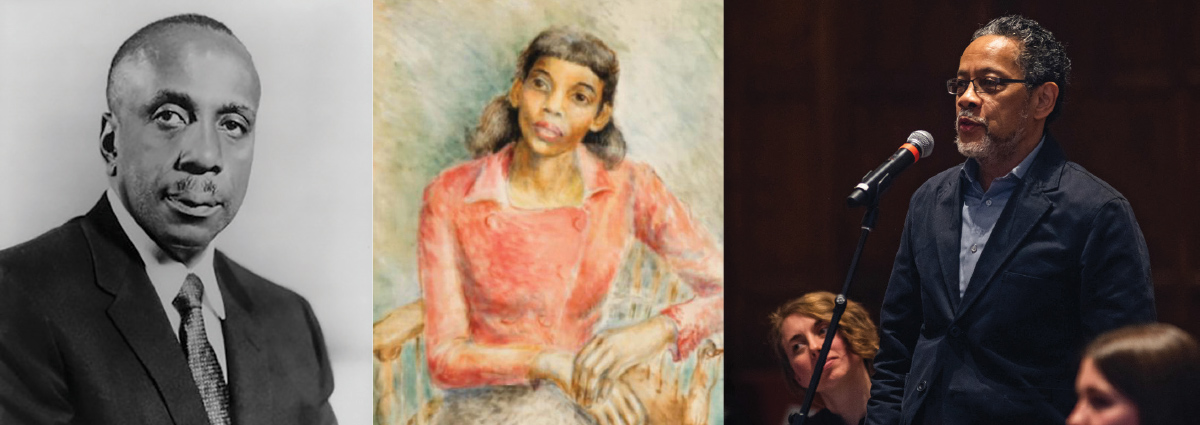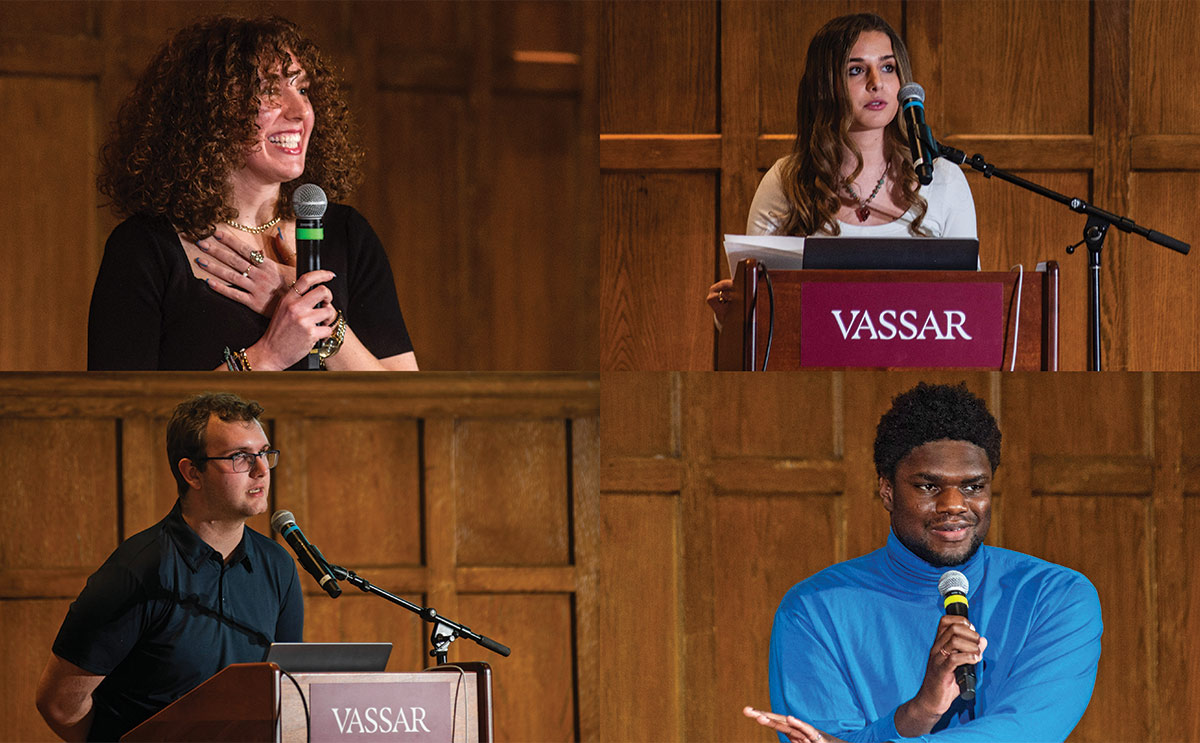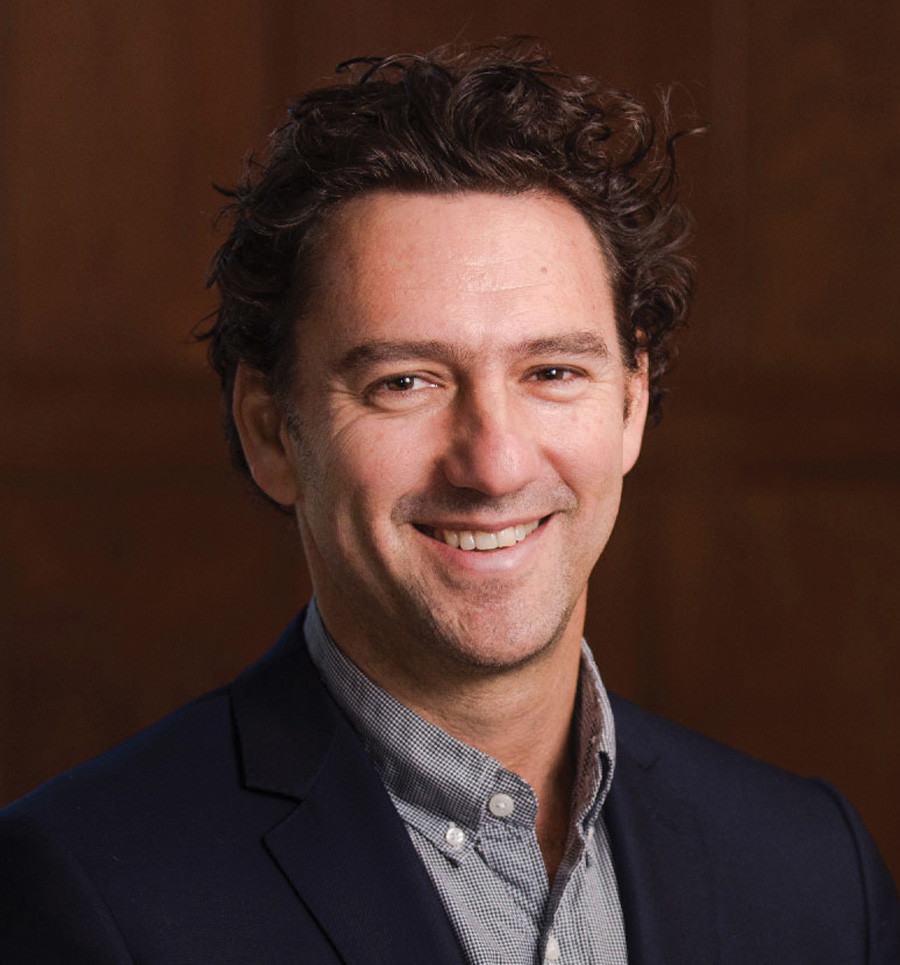
National Institutes of Health / Painting by Phyllis Bronfman Lambert ’48 / Kelly Marsh
The Surprising Legacy of Black Theologian Rev. Howard Thurman at Vassar
lack theologian Howard Thurman has been widely credited with being a mentor to civil rights leaders Dr. Martin Luther King Jr., Bayard Rustin, and Pauli Murray. But Reverend Thurman also played a key role in shaping Vassar’s human rights journey, delivering more than a dozen sermons in the Chapel, many of them before the College had knowingly accepted a single Black student.
On February 15, members of the Vassar community convened in the Villard Room—and via Zoom—to witness four Vassar students’ tributes to Reverend Thurman. Croix Horsley ’26, Maya Winter ’26, Jarod Hudson ’26, and Katie Varon ’24 had conducted their research last fall while they were enrolled in an Intensive course on Thurman’s Vassar legacy taught by Professor of Religion and Director of Engaged Pluralism Jonathon Kahn.
Kahn said the presentations marked the first public event of Vassar’s recently established Inclusive History Initiative, aimed at looking more honestly into Vassar’s past. “Looking at Vassar’s history more critically can be difficult and disturbing,” Kahn said, “but Thurman was an activator of activists, and as the semester went on, the students became more energized to tell his story—because we at Vassar must consider not just who we are, but also who we want to be.”
Horsley opened the student presentations by showing a video tribute to Thurman he’d produced for the course. The film chronicled Thurman’s journey from a humble beginning in racist Daytona Beach, FL, to his accomplishments at Morehouse College, where he graduated as valedictorian, and his time at Rochester Theological Seminary. “[Thurman] became a beacon of peace and love and came to learn and preach the power of nonviolence as a force for change,” Horsley said.
Winter’s presentation, “Uncovering Inequity,” consisted of dozens of articles about Vassar’s civil rights issues she had found in the Black press between 1928 and the late 1960s. Winter noted that these stories appeared in papers around the country, not just in New York City. Many of these articles were critical of the College, including coverage of Du Bois’s speech, Winter said. Another article noted that while the College had announced in 1935 that it would be accepting applications from Black students, none were admitted until 1940, when Beatrix McCleary broke Vassar’s color barrier as the first openly acknowledged Black student to graduate from Vassar. (Another, Alice Turner Howard ’39, had been the first to enroll but transferred.) Winter noted, however, that when Thurman brought students from Howard University to Vassar in 1941, the Chicago Defender had reported they had been welcomed warmly. Winter said that while this student exchange had been a positive one, “Vassar was still not doing much to advance social justice.”

Kelly Marsh
“So this ‘hate’ strategy worked—until it didn’t,” Hudson said, alluding to what he had learned by reading one of Thurman’s books, Jesus and the Disinherited. In it, Thurman talks about how the Gospel may be read as a guide for resistance for the poor and disenfranchised, and that Jesus is a partner of the oppressed. Thurman concluded that Jesus’s message was that hatred cannot empower anyone and that only through love can justice prevail. “Thurman talked of love and forgiveness and unity,” Hudson said. “Forgiveness is not passivity, but my anger cannot be directed at my fellow students, only at those who perpetuate Vassar as an elite space.”

Varon said she was struck by one page of the Miscellany News, which carried both a story by Olive in which she praised a Founder’s Day play performed by the faculty and another story about a prize-winning minstrel show performed by White Vassar students. Olive admonished the College for allowing such a performance. “She praised the College, and she criticized the College,” Varon said, “and those who come after her must be grateful to her for pushing Vassar to a greater future.”
Eric Wilson ’76, Co-Chair of the African American Alumnae/i of Vassar College (AAAVC), concluded the program by praising the panelists and saying that he hoped that Reverend Thurman’s example would “move the College forward.”
One special guest at the event, Anton Howard Wong, son of Olive Thurman Wong ’48 and grandson of Reverend Thurman, said he was “blown away” by the presentations. Until he witnessed Varon’s presentation, Wong said, he had not known about many of his mother’s activities and accomplishments at Vassar.
During a question-and-answer session following the presentations, Professor Kahn applauded the students for their work and said he was “struck that the four projects had taken off in such different directions.” He said he hoped the event would spark more conversations on campus about the complexity of Vassar’s history. “I knew the students would be incredible, and they were,” he said. “To forge change, you need a map, and I think as much as anyone at Vassar, Howard Thurman provided that map, and the better map we have, the better we can become.”